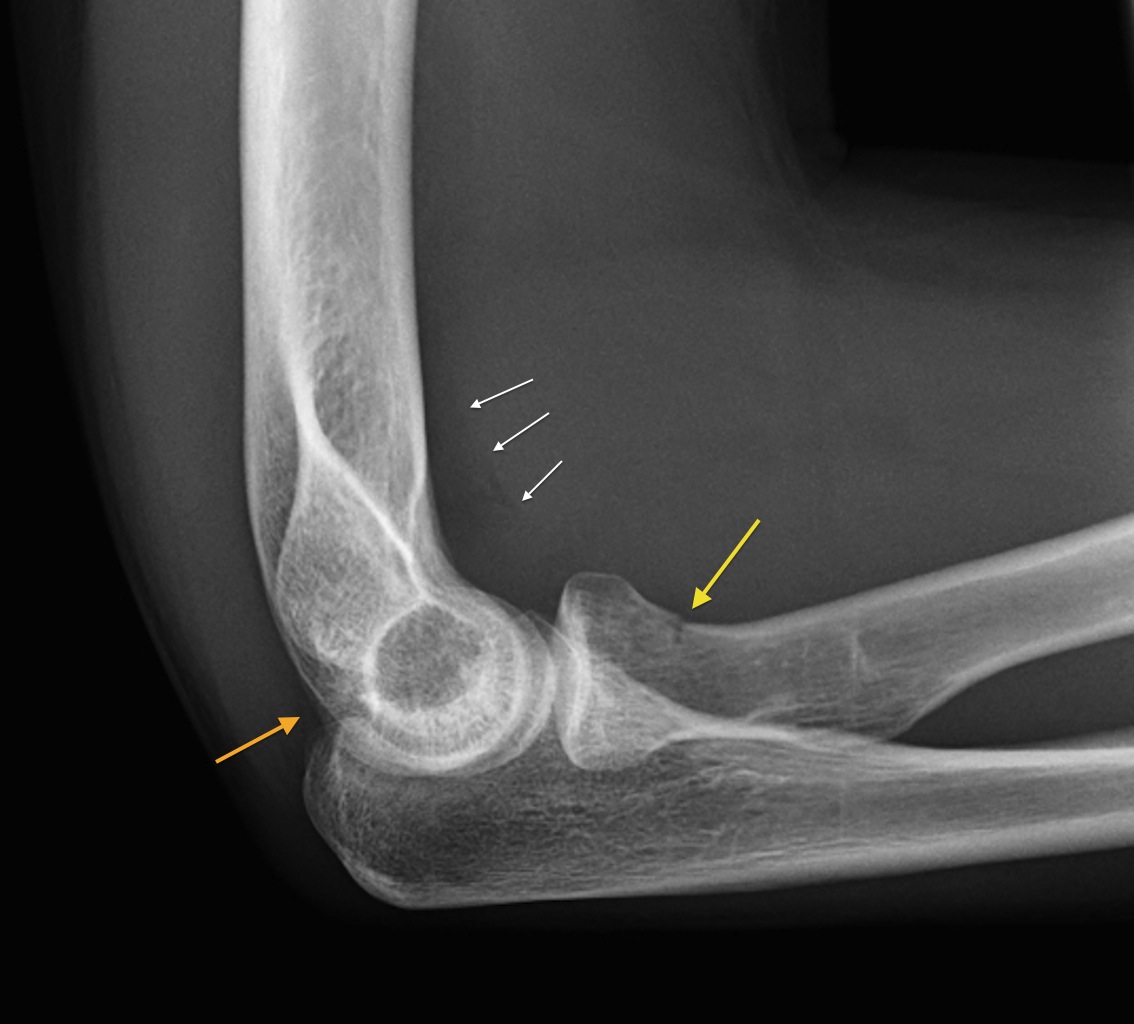

Oblique views with the forearm in neutral rotation, so-called Greenspan views, show the radiocapitellar articulation and may be useful in the case of a suspected fracture that is not visible on AP or lateral films.

A fracture of the radial head with concomitant dislocation of the distal radio-ulnar joint is called an "Essex-Lopresti fracture." The distal radio-ulnar joint should be assessed on the lateral film for dislocation. Radiographs must be obtained in the case of suspected elbow fracture standard anteroposterior (AP) and lateral films of the elbow and of the wrist usually suffice. Aspiration of the effusion may assist with diagnosis and provide pain relief, thereby allowing faster and more effective rehabilitation. Intra-articular bleeding from the fracture may produce a palpable effusion. There is typically localized tenderness over the radial head on palpation passive rotation of the forearm is also painful. Pain, effusion over the elbow, and limited range of motion at the elbow and forearm are common symptoms. Patients with an injury to the radial head typically present with a history of a fall on an outstretched hand, or, following higher energy trauma and elbow dislocation. In particular, loss of the radial head may cause wrist symptoms, as such loss may cause proximal migration of the radius with additional load now placed on the proximal ulna. The radial head also ultimately connects to the carpus, as it is the base on which the radius itself is supported.

(The central axis of the radius is not perfectly cylindrical, and thus during pronation, the radius must be able to translate a bit as well). This ligament holds the radius as it rotates, but also allows for some translation as well. Just distal to the radial head lies the annular ligament, which holds the radius to the ulna. The radial head translates on the capitellum during elbow flexion-extension, and pivots on the capitellum during supination-pronation. The radial head is concave, matching the convex surface of the capitellum of the humerus (Figure 2). The radial head articulates with both the capitellum of the humerus and the ulna. The impact from the fall drives the radius proximally into the humerus, causing an injury at the elbow. Perhaps counter-intuitively, fractures of the radial head (which is part of the elbow) typically occur after a fall on an outstretched hand. Radial head fractures are the most common type of elbow fractures in adults.


 0 kommentar(er)
0 kommentar(er)
